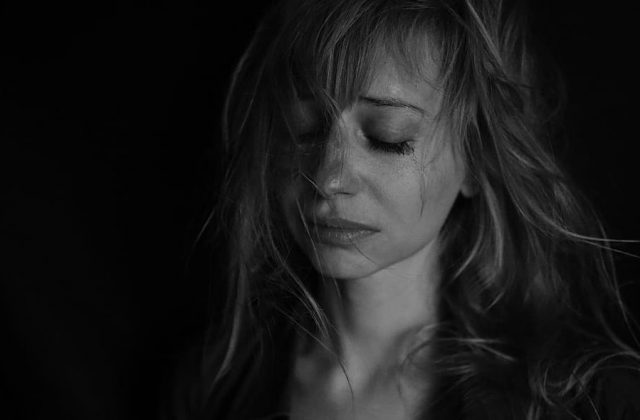Depression and anxiety are mental health disorders that may co-occur at the same time in some people. The prevalence of developing anxiety disorders in addition to depression or vice versa is very high. It has been estimated that about 60% of people affected with anxiety disorders may also have depression.
Links between Depression and Anxiety
Research suggests that depression and anxiety often occur at the same time as they are caused by same or similar factors. Some of the overlapping factors that cause depression and anxiety include:
- Genetic Factors
Genetic factors contribute to about 40 % of depression and anxiety cases. Family history is often associated more with anxiety than depression.
- Environmental And Social Factors
Environmental and social factors that could cause depression and anxiety include:
- Challenging childhood experiences like abuse, trauma, neglect, abandonment or family violence
- Life stresses
- Major life changes
- Relationship difficulties
- Social isolation
- Traumatic events in life
- Unemployment and/or financial problems
- Pain
The biological mechanisms of pain is closely linked with depression and anxiety. Pain associated with depression and anxiety includes:
- Chronic pain
- Disabling pain syndromes such as fibromyalgia
- Headache
- Irritable bowel syndrome (IBS)
- Low back pain
- Nerve pain
- Anxiety And Depression Are Cyclic
The occurrence of double mental disorder is often cyclic. People with depression often feel anxious and worried. Likewise, anxiety often makes a person depressed. One mental health condition can trigger the other.
What Are The Signs And Symptoms Of Depression And Anxiety?
Common symptoms of depression and anxiety are:
- Becoming easily fatigued
- Trouble concentrating and/or mind going blank
- Irritability
- Problems with sleep, such as difficulty in falling and staying asleep and restless, unsatisfying sleep
- Unexplained emotional changes
Other signs that a person with both anxiety disorder and depression may have, includes:
- Changes in eating pattern, either eating too little or too much
- Feeling gloomy, unhappy, worthless or helpless
- Constant irrational fear and worry
- Inability to relax
- Losing interest in activities and hobbies suddenly
- Panic attacks
- Physical symptoms such as rapid heartbeat, breathing difficulty, sweating, hot flashes, headaches and/or abdominal pain
Symptoms that Distinguish Depression and Anxiety
There are several symptoms that distinguish depression and anxiety.
- Symptoms of Depression
Physical and behavioral symptoms of depression include:
- Reduced energy or fatigue
- Difficulty in making decisions or recalling
- Trouble concentrating
- Pain, body-aches, cramps or gastrointestinal problems without clear reason
- Change in weight or appetite
- Sleeping problems waking early, or oversleeping
Emotional symptoms of depression include:
- Interest loss in activities or hobbies
- Persistent sadness, anxiety or emptiness
- Feeling pessimistic or hopeless
- Frequent bouts of anger, irritability or restlessness
- Feeling guilty or worthless or helpless
- Frequent thoughts and attempts of suicide
- Symptoms of Anxiety
Physical and behavioral symptoms of anxiety include:
- Difficulty in concentrating, focusing or recalling
- Easily fatigued
- Grinding of teeth
- Muscle stiffness
- Racing heart
- Headaches
- Hot flashes or sweating
- Abdominal discomfort and/or difficulty breathing
- Sleep problems, including difficulties in falling asleep and restless sleep
Emotional symptoms of anxiety include:
- Feeling irritable, restless or edgy
- Difficulty controlling worry or fear
- Dread
- Panic
It’s important to see a doctor if symptoms persist for two or more weeks.
How Can Depression And Anxiety Be Treated?
Although depression and anxiety are different mental health conditions, they share many symptoms and can be treated at the same time. Combination of psychotherapy, medication and lifestyle changes may be used to treat both conditions together.
PSYCHOTHERAPY OR TALK THERAPY
One or more of the following therapies may be recommended by the doctor:
- Cognitive Behavioral Therapy (CBT) – CBT focuses on teaching people to use coping skills to adjust their thoughts, behaviors and reactions.
- Interpersonal Therapy (IPT) – IPT focuses on learning communication strategies that can help a person to express themselves better. IPT focuses on current interpersonal problems such as relationship problems, grief, social isolation or withdrawal.
- Problem-Solving Therapy – The therapy focuses on using coping skills to deal with symptoms.
MEDICATION
Because the symptoms of anxiety and depression overlap one medication is adequate to treat both depression and anxiety. The doctor may prescribe:
- Antidepressants – The doctor may prescribe an antidepressant drug that can treat both depression and anxiety such as:
- Selective serotonin reuptake inhibitors (SSRIs). SSRIs are often used along with psychotherapy for severe depression and anxiety.
- Serotonin and norepinephrine reuptake inhibitors (SNRIs)
Antianxiety Medications – These drugs reduce symptoms of anxiety but not all the symptoms of depression. They should be used only for a short duration due to risk of addiction. There are classes of antianxiety medications and nootropics that decrease the activity of neurons causing stress. These nootropics and arylcyclohexylamines will help you improve the quality of your life and balance stress levels to some extent. Well-researched formulas such as Chemical Planet and BrainFit offer effective products to enhance cognitive skills.
- Mood Stabilizers – These medications are used to stabilize the mood when antidepressants don’t work.
LIFESTYLE CHANGES
Lifestyle changes alone cannot completely treat depression and anxiety. In addition to psychotherapy and medication, lifestyle changes help to manage depression and anxiety. Recommended lifestyle changes include:
- Prioritize Sleep – 7 to 8 hours of uninterrupted sleep is essential each night, for good mental health.
- Regular Exercise – Exercise raises serotonin and endorphins levels, which can help manage anxiety and depression.
- Good nutrition – Eat a healthy balanced diet that is low in sugars and includes fruits, vegetables, lean protein, fish, probiotics, nuts and legumes.
- Water – Drink 6-10 glasses of water a day as dehydration may impact the mood.
- Avoid or limit alcohol – Alcohol is a depressant and its after-affects can make one anxious. If one is taking antidepressants, alcohol may cause damaging side-effects.
- Relaxation techniques – Relaxation techniques such as yoga, meditation, breathing exercises and massage can relax the mind.
- Get Support – Keep positive people around and join support groups.
Can PEMF Therapy Help Treat Depression And Anxiety?
Since the 1970s, PEMF (Pulsed Electro Magnetic Fields) therapy has been utilized to promote bone healing in non-union cases.
PEMF therapy for brain health and neuro-wellness has been shown to be helpful as a mood booster and also for major depressive disorders1, according to research and reviews. PEMF (Pulsed Electromagnetic Field) technology has been shown to have antidepressant properties that are more effective than antidepressants. PEMF has been licensed by the FDA for the treatment of mental depression in the United States and Canada, and it is also generally accepted in Eastern Europe and the European Union.
PEMF works by producing tiny electrical fields in tissue, which promotes healing. PEMF Therapy provides transcranial magnetic stimulation when used with applicators such as PEMF pads, helmets, or pillows (rTMS). Brain stimulation with pulsating magnetic fields increases circulation and helps to correct neurochemical imbalances4 that cause depression.
PEMF balances hormonal activities such as serotonin (which helps you feel calm, serene, optimistic, and self-confident), dopamine (which makes you feel stimulated, driven, and energized), and the stress hormone5, cortisol, by increasing cellular respiration and nutritional intake (which revs you up into a high gear when you need it).
PEMF therapy is incredibly relaxing and safe. During these treatments, patients are awake and can read, rest, relax, or even eat. Some people may have mild nausea for a short period of time. There have been no further side effects reported.
Sentient Element is one of the best, powerful and portable PEMF devices that allows you to choose from long low intensity sessions to short deep penetrating high intensity sessions or anything in-between.
The doctor will decide on the frequency and duration of PEMF therapy. In the treatment of depression and several other mental health disorders, PEMF therapy has been proven to be as beneficial as medication.
Learn more about how PEMF Therapy can help with anxiety and depression.

A professional writer with over a decade of incessant writing skills. Her topics of interest and expertise range from health, nutrition and psychology.




